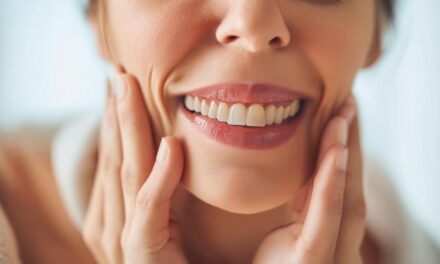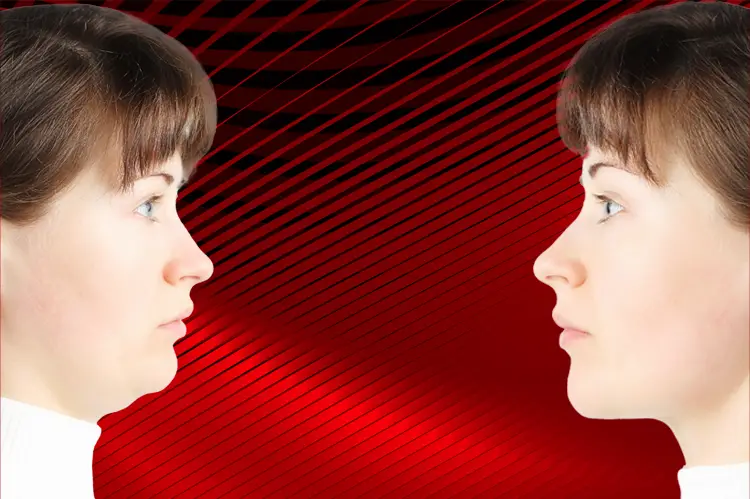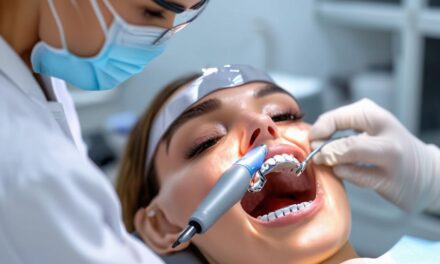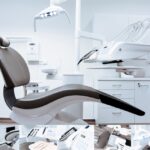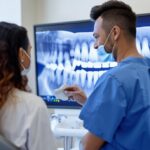There are several factors that determine how attractive a person’s face is. Alison Pearce Stevens explains in Science News for Students that symmetry, averageness (how similar a face is to most other faces in the population) and personal preference are big contributors.
But another interesting factor that you might not be aware of is jaw alignment. As it turns out, your bite has a considerable impact on the shape of your face. Normal jaw alignment creates more symmetry and better facial aesthetics, while poor jaw alignment has the opposite effect.
Let’s now explore why this is in detail and discuss how a misaligned jaw can alter your face shape.
Why People Develop Irregular Bite Profiles
The IOV World team writes that in an ideal situation your teeth will sit easily in your mouth without any spaces in between or crowding, and the top teeth would slightly overlap the lower set. That’s what we would classify as normal jaw alignment.
Unfortunately, this isn’t always how everyone’s bites develop. Some people develop severe malocclusion, which Donna M. Rounsaville, RDH, BS explains at Colgate is a mismatch in tooth alignment that creates irregular contact between the upper and lower teeth.
And this can manifest itself in a few different ways.
The ToothIQ team discusses some examples of malocclusion positional features, including:
- Overbite. The upper teeth hide the lower teeth.
- Underbite. The lower teeth and jaw protrude up beyond the upper jaw.
- Open bite. The upper and lower teeth slant outward so they don’t touch when the mouth is shut.
- Crossbite. One or more teeth are positioned irregularly. PatientConnect365 explains that if anyone tooth or several teeth lay closer to the tongue or cheek instead of coming together, this typically constitutes a crossbite.
- Reverse overjet. The lower teeth are positioned forward of the upper teeth.
According to Boston Children’s Hospital, malocclusion is actually quite prevalent. Roughly 90 percent of school-aged children have some level of it. However, 10 to 15 percent have severe malocclusion that requires treatment.

The Impact a Person’s Bite Has on the Shape of Their Face
Malocclusion doesn’t just affect your jaw structure and ability to chew. It also affects your facial aesthetics.
Jenny Green touches on the impact of a misaligned bite in a separate article in Colgate. She notes that if the condition isn’t corrected, the face can grow asymmetrically.
The NewBeauty team elaborates, saying that when your teeth are out of their proper alignment, they cause your smile and entire face to look completely different. For instance, imperfections with the lower teeth create what’s known as short teeth. This throws off the normal symmetry of your face because the proportional distance between your nose and chin will look out of balance.
In other cases, shifting teeth can make your face appear sunken and hollow. As teeth move, it means less internal support, causing the lower jaw to lose its definition. That’s one way people develop a weak chin. This type of collapsing bite inevitably causes the jaw to move forward, making the distance between the nose and chin shorter, giving your face the appearance of premature aging.
Sometimes, spaces can form when teeth shift, which adversely impacts the smile. NewBeauty points out that “paces between the teeth can make the overall smile seem crooked and gappy.”It can also make your smile look “worn.”
These changes can make some people feel self-conscious, and, sadly, many suffer from low self-esteem as a consequence. While the aesthetic effects of malocclusion can create psychological pain for individuals of all ages, it can be particularly troubling for children and teenagers when they are the targets of teasing and bullying.
How Malocclusions Can Develop
Emily Lockhart talks about some of the more common factors that cause malocclusion in ActiveBeat. Perhaps the biggest reason is simply due to genetics.
“If you’re genetically predisposed to malocclusion, you may have limited opportunities to prevent misalignment of your teeth from developing because your genetic makeup indicates that you will inevitably experience some level of malocclusion,” she says.
If this is something that’s common within your family, you’ll want to tell your dentist about it so they can be on the lookout for early signs.
A lot has to do with childhood habits, as well. For instance, children who suck on their thumbs, use pacifiers (especially after age three) or feed on bottles have a higher likelihood of suffering from abnormal tooth development.
Although dental work like braces, retainers and fillings aid in oral health, they can sometimes cause shifting in the teeth or jaw that eventually creates a misalignment. As the MedlinePlus team points out, the odds of issues occurring increase when these are incorrectly fitted or there’s poor dental work done.
Malocclusion can stem from injuries, as well. For example, being in a major vehicle accident could potentially result in damage to the jaw and affect its alignment. People who play highly physical contact sports like football and hockey are especially prone to these kinds of injuries, too. If they experience major trauma to their mouth, it can adversely impact their jaw alignment later on.
Lana Bandoim also mentions in EmaxHealth that oral tumors can be a factor. Although less common, tumors can certainly create some serious complications if not addressed.
Finally, there are teeth grinding, also known as bruxism. Although it may seem fairly innocuous, grinding your teeth can wear them down over time, change your bite and alter your face as you age. Dentist Tom Draper adds in Oral Answers that grinding wears away tooth structure, and your teeth get shorter. This, in turn, can cause your face to become shorter.
Beyond that, the Dentaly team explains that over time teeth grinding damages the teeth and can result in jaw pain and headaches. The alarming thing is that many people aren’t even aware that they’re grinding their teeth. In fact, 80 percent of cases involve nocturnal bruxism, in which patients involuntarily and unconsciously grind their teeth in their sleep.
The Big Picture
As you can see, there are several issues that can lead to malocclusion. It can be from something obvious like a serious injury or something more subtle like grinding your teeth at night. Any of these causes can negatively impact your jaw alignment.
If left unchecked, jaw misalignment can lead to a host of problems. The Bite Correction team outlines some of the more common ones, including:
- Teeth become harder to keep clean
- Increased plaque buildup
- Wearing on the teeth’s enamel
- Periodontal issues such as gingivitis
- Increased susceptibility cavities
- An increased likelihood of needing dentures later on
In severe cases, jaw misalignment can create discomfort when chewing and speech problems.
Aesthetically, poor jaw alignment can lead to changes in the face’s natural shape. Even when your face is naturally symmetrical, poor jaw alignment can erode that symmetry over time. Alternatively, you could develop a weak chin, which can create the look of premature aging.

Correcting Severe Malocclusion With Special Treatments
Many people find the aesthetic aspect of jaw misalignment quite traumatic.
In 2017, Saudi researchers Salwa Mahmoud Taibah and Fadia Mohammed Al-Hummayani conducted a study in which they interviewed nearly 900 adolescent boys and girls and assessed the level of malocclusion in their bites. The results weren’t surprising: Teenagers with severe malocclusion (particularly overjets and multiple instances of spacing or crowding issues) reported self-esteem issues.
Fortunately, these are conditions that can be treated, often without surgery. Bite correction is a non-invasive procedure that effectively corrects a jaw position to unlock the natural facial profile. It can have an incredible impact on self-esteem and offers incredible cosmetic advantages.
Here are some of the specific benefits of bite correction:
- Improved chin and facial profile for an anti-aging effect
- The jaw position is idealized
- Healthy tooth structure
- Increased confidence and higher self-esteem
If you’re dealing with malocclusion or improper jaw alignment, be sure to consult a dentist or oral care professional to determine whether bite correction makes sense for you.
An Undeniable Correlation
It’s fascinating how much of an impact a person’s bite has on the shape of their face. For better or worse your entire facial aesthetics are determined in part by your jaw’s alignment. If there are any major issues, this is something you’ll want to get checked out and take action to correct.
Images by: Autumn Goodman, Loren Joseph, Aatik Tasneem



